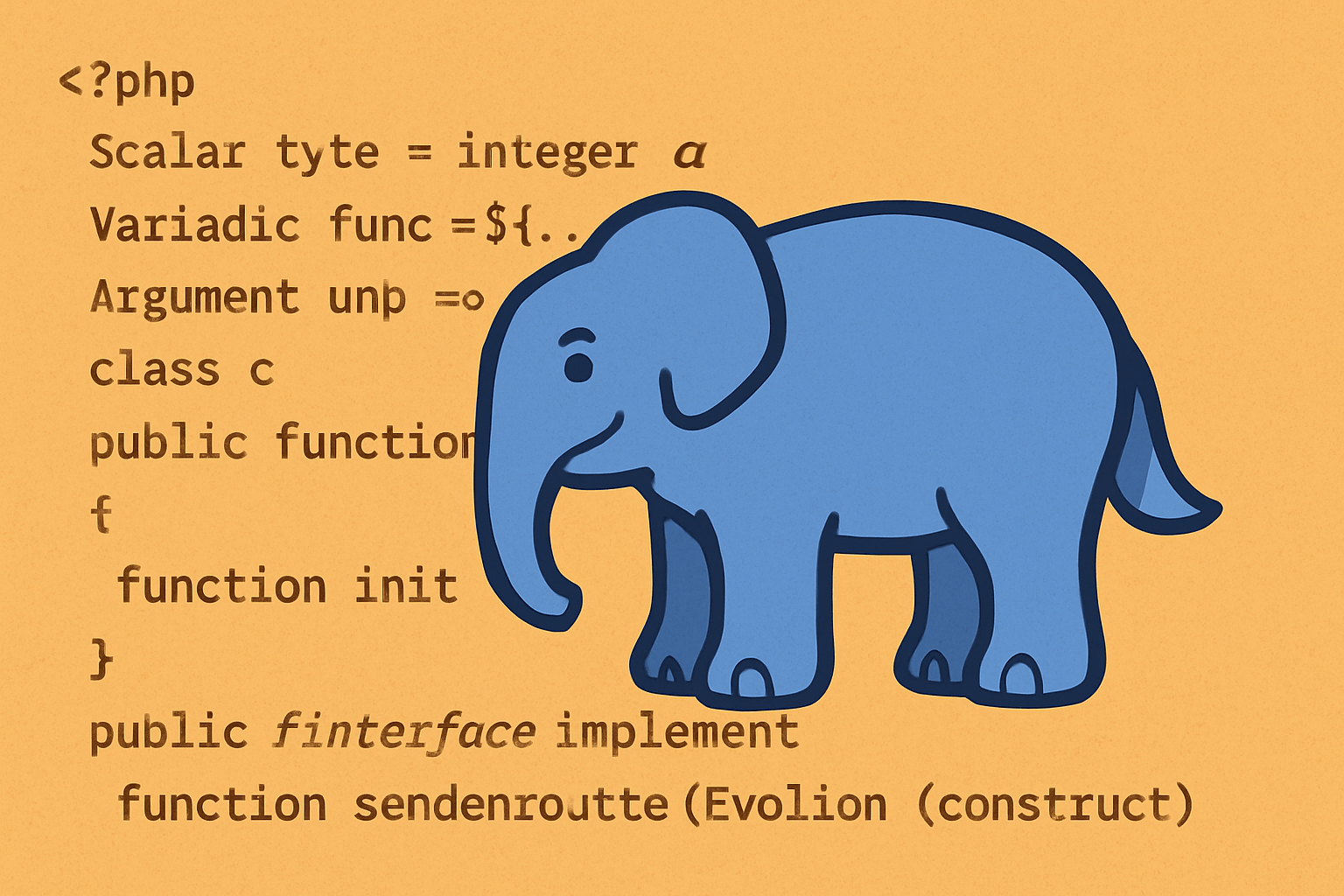The Rise and Renaissance of PHP: From 5.6 to the Modern Web

When people talk about programming languages that have stood the test of time, PHP often sparks debate. For years, it’s been the workhorse behind the web — and despite the memes, it’s still powering over 75% of websites today. But what many critics overlook is just how far PHP has come, especially since the days of version 5.6.
With the release of PHP 8.3, the language continues to demonstrate its maturity, performance, and modern design. Today, PHP isn’t just relevant — it’s robust, developer-friendly, and evolving at a steady pace.
You might wonder what happened to PHP 6 — and that’s part of the story. PHP 6 was a long-running, ambitious project aimed at introducing native Unicode support. However, due to technical complexity, inconsistent implementation, and community fragmentation, it was ultimately abandoned. To avoid confusion and symbolically start fresh, the next official release after 5.6 was named PHP 7.0.
In this post, we’ll look back at PHP 5.6, walk through the evolution of the language, and see why modern PHP (as of 8.3) is not just good — it's excellent.
🌅 The PHP 5.6 Era (2014): A Turning Point
PHP 5.6, released in August 2014, was the final release in the 5.x series. It brought several useful features:
- Constant scalar expressions
- Variadic functions using
...$args - Argument unpacking with the splat operator
- Exponentiation operator (
**) - Improved SSL/TLS support
But let’s be honest — by 2014, PHP was facing heavy criticism. Competing languages like Python and Ruby were winning mindshare. PHP 5.x had a reputation for inconsistency, lack of type safety, and "legacy mess."
Yet, 5.6 laid the foundation for change.
⚡ PHP 7.x: Performance, Power, and Paradigm Shifts
PHP 7.0, released in December 2015, was a game-changer. The Zend Engine 3.0 brought massive performance improvements — sometimes double the speed of 5.6 with half the memory usage.
Key Features of PHP 7.x:
- Scalar type declarations
- Return type declarations
- Null coalescing operator (
??) - Spaceship operator (
<=>) - Anonymous classes
- Throwable interface and Error handling
- Group use declarations
- Performance gains — significantly faster execution
PHP 7.1 to 7.4 kept the momentum going:
- Nullable types
- Iterable and void returns
- Typed properties (7.4)
- Arrow functions (
fn() =>) - Preloading
- Covariant and contravariant return types
This era was all about cleaning up the language, enforcing modern coding standards, and encouraging better software architecture.
🚀 PHP 8.x: A Modern Powerhouse
PHP 8.0 (released in November 2020) marked the beginning of a new era of robust, expressive, and elegant code.
Highlights of PHP 8.0–8.3:
- JIT Compilation (Just-In-Time) for performance
- Union types
- Named arguments
- Attributes (native annotations)
- Constructor property promotion
- Match expressions (a more powerful
switch) - Nullsafe operator (
?->) - Static return type
- Readonly properties (8.1)
- Enums (8.1)
- Fibers (8.1) — paving the way for asynchronous PHP
- First-class callable syntax (8.1)
- Intersection types (8.1)
- Readonly classes, new
json_validate()(8.2) - Class constant typing, deep cloning of readonly properties (8.3)
🆕 PHP 8.4 (November 2024)
PHP 8.4, released in November 2024, continues the refinement of the language. While not as revolutionary as earlier 8.x releases, 8.4 focuses on quality-of-life improvements, performance boosts, and early compatibility groundwork for PHP 9.0.
Key additions include:
- Better generator performance and suspension control
- Improved callable type support
- More flexible class constants
- Enhanced error messages and stack traces
- Continued focus on deprecating legacy behaviors in preparation for PHP 9
PHP 8.4 shows the language is evolving responsibly — without breaking things needlessly — while continuing to deliver speed, safety, and clarity.
🛠 The Ecosystem: Composer, Frameworks, and Tooling
Modern PHP also thrives thanks to an improved ecosystem:
- Composer: A dependency manager that revolutionized PHP package management.
- Frameworks: Laravel, Symfony, Slim, and others set best practices and offer powerful tooling.
- Static analysis: Tools like PHPStan and Psalm add type safety.
- Testing: PHPUnit, Pest, and Mockery have matured greatly.
With frameworks like Laravel adopting bleeding-edge PHP features quickly, developers have never had more expressive, maintainable codebases.
🤔 Why Use PHP in 2025?
- It’s mature and stable.
- Backed by a vast community and real-world battle testing.
- It’s incredibly fast thanks to years of optimization.
- It supports modern programming paradigms — OOP, functional, async.
- The ecosystem is rich, and deployment is simpler than ever (hello, serverless PHP!).
🎯 Conclusion
PHP is no longer the messy language it was once accused of being. From the final days of 5.6 to the cutting-edge power of PHP 8.4, the language has undergone a renaissance. Whether you're building high-performance APIs, modern web applications, or CLI tools, PHP today is a serious contender — and one that rewards developers who take the time to understand its full capabilities.
So if you dropped PHP years ago, it's time to give it another look.
🧡 PHP isn't just alive — it's thriving.